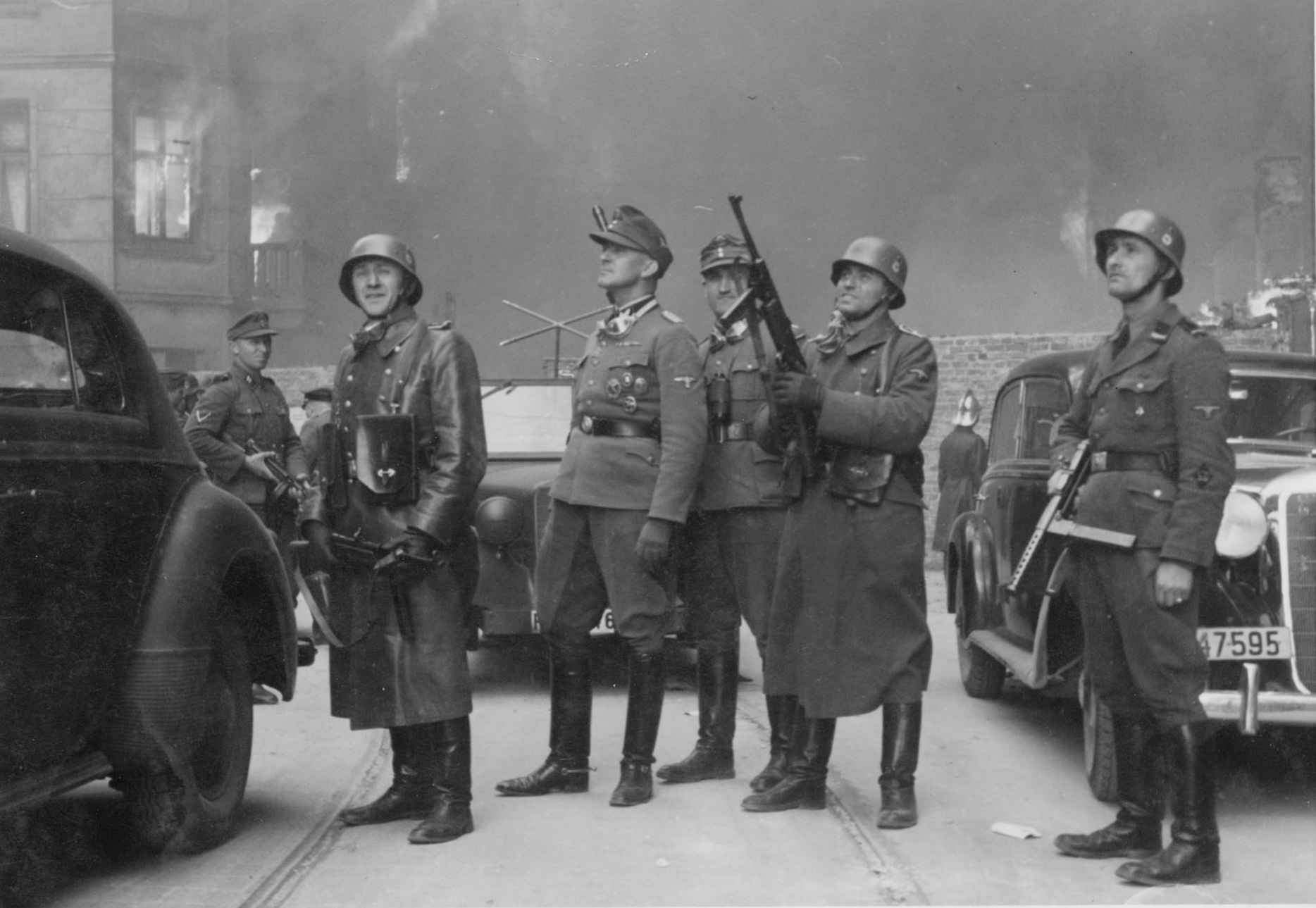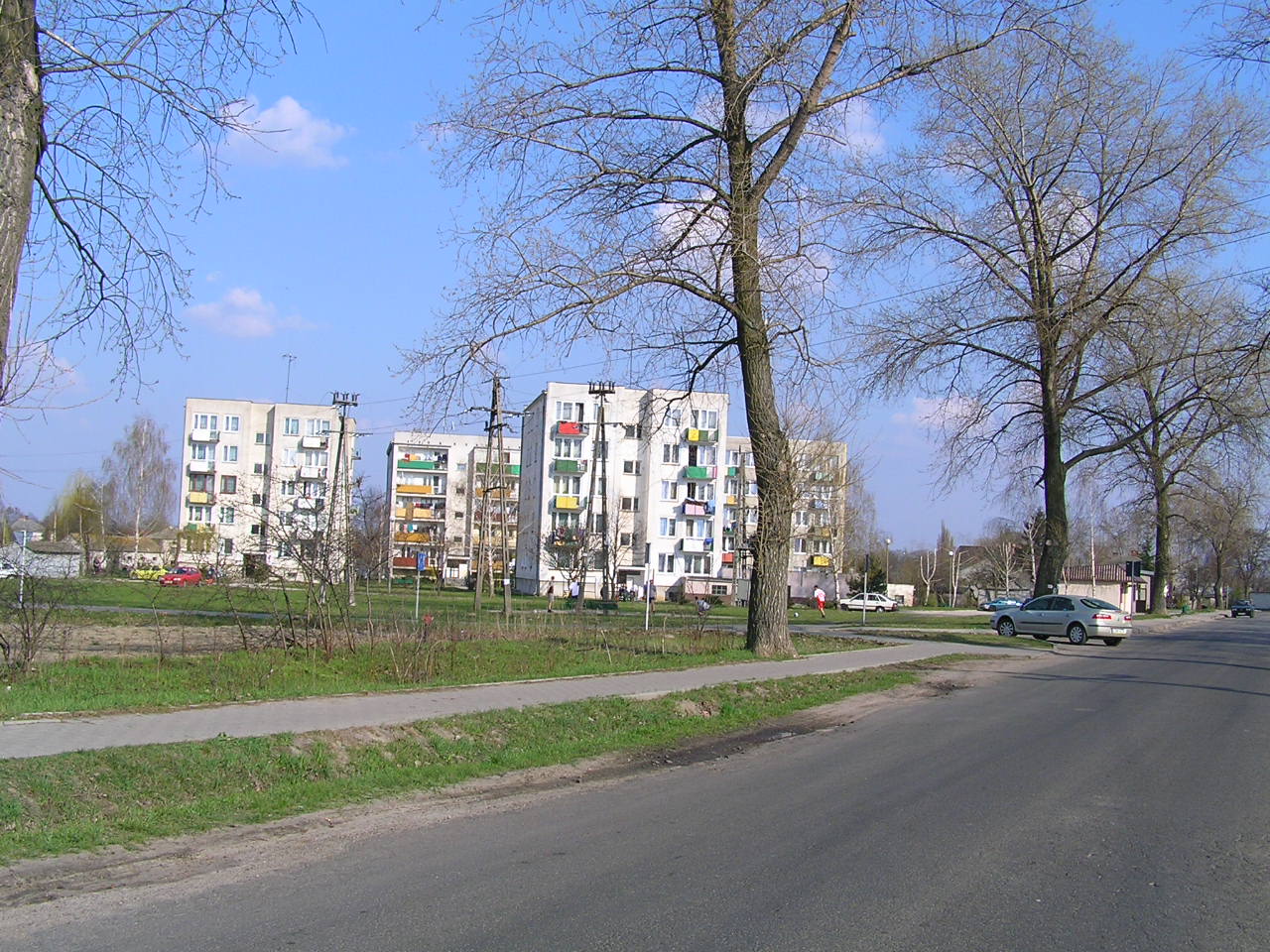|
Conversations With An Executioner
''Conversations with an Executioner'' ( pl, Rozmowy z katem) is a book by Kazimierz Moczarski, a Polish writer and journalist, officer of the Polish Home Army who was active in the anti-Nazi resistance during World War II. On 11 August 1945, he was captured and imprisoned in a maximum-security prison by the notorious UB secret police under Stalinism. For a time, he shared the same cell with the Nazi war criminal Jürgen Stroop, who was soon to be executed. They engaged in a series of conversations. The book is a retelling of those interviews.Andrzej Szczypiorski (1977) Moczarski Kazimierz, ''Rozmowy z katem''text with ''Notes'' and ''Biography'' by Andrzej Krzysztof Kunert (PDF 1.86 MB, available from Scribd.com). Retrieved Moczarski spent four years on death row (1952–56), incarcerated as an alleged enemy of the state. He was tried three times while in prison as an anticommunist, and pardoned eleven years later, during the anti-Stalinist Polish October.Stéphane Courtois, Ma ... [...More Info...] [...Related Items...] OR: [Wikipedia] [Google] [Baidu] |
Kazimierz Moczarski
Kazimierz Damazy Moczarski (21 July 1907 – 27 September 1975) was a Polish writer and journalist, an officer of the Polish Home Army (''noms de guerre'': Borsuk, Grawer, Maurycy, and Rafał; active in anti-Nazi resistance). Kazimierz Moczarski is primarily known for his book ''Conversations with an Executioner'', a series of interviews with a fellow inmate of the notorious UB secret police prison under Stalinism, the Nazi war criminal Jürgen Stroop, who was soon to be executed. Thrown in jail in 1945 and pardoned eleven years later during Polish October, Moczarski spent four years on death row (1952–56), and was tried three times as an enemy of the state while in prison.Stéphane Courtois, Mark Kramer ''Livre noir du Communisme: crimes, terreur, répression''.The Black Book of Communism: Crimes, Terror, Repression, ''Harvard University Press'', 1999, 858 pages. . Pages 377–378. Biography Born on 21 July 1907 in Warsaw, Moczarski was the son of Jan Damazy, teacher and ... [...More Info...] [...Related Items...] OR: [Wikipedia] [Google] [Baidu] |
Trawniki Men
Trawniki is a village in Świdnik County, Lublin Voivodeship, in eastern Poland. It is the seat of the present-day gmina (administrative district) called Gmina Trawniki. It lies approximately south-east of Świdnik and south-east of the regional capital Lublin. The village has a population of 2,893. History During World War II and the Nazi occupation of Poland, Trawniki was the location of the Trawniki concentration camp. This camp provided slave labourers for nearby industrial plants of the SS ''Ostindustrie''. They worked in appalling conditions with little food, and many died of disease, malnutrition and ill treatment. From September 1941 until July 1944, the camp was also used for training guards recruited from Soviet Union, Soviet Prisoner of war, POWs, who were known as "Hiwi (volunteer), Hiwi" (German letterword for 'Hilfswillige', lit. European non-Germans in the German armed forces during World War II, "those willing to help"), for service with Nazi Germany, Auxilia ... [...More Info...] [...Related Items...] OR: [Wikipedia] [Google] [Baidu] |
Polish Jews
The history of the Jews in Poland dates back at least 1,000 years. For centuries, Poland was home to the largest and most significant Ashkenazi Jewish community in the world. Poland was a principal center of Jewish culture, because of the long period of statutory religious tolerance and social autonomy which ended after the Partitions of Poland in the 18th century. During World War II there was a nearly complete genocidal destruction of the Polish Jewish community by Nazi Germany and its collaborators of various nationalities, during the German occupation of Poland between 1939 and 1945, called the Holocaust. Since the fall of communism in Poland, there has been a renewed interest in Jewish culture, featuring an annual Jewish Culture Festival, new study programs at Polish secondary schools and universities, and the opening of Warsaw's Museum of the History of Polish Jews. From the founding of the Kingdom of Poland in 1025 until the early years of the Polish–Lithuanian Comm ... [...More Info...] [...Related Items...] OR: [Wikipedia] [Google] [Baidu] |
Hilfswilliger
Hiwi (), the German abbreviation of the word ''Hilfswilliger'' or, in English, auxiliary volunteer, designated, during World War II, a member of different kinds of voluntary auxiliary forces made up of recruits indigenous to the territories of Eastern Europe occupied by Nazi Germany. Adolf Hitler reluctantly agreed to allow recruitment of Soviet citizens in the Rear Areas during Operation Barbarossa. In a short period of time, many of them were moved to combat units. Overview Hiwis comprised 50% of the 2nd Panzer Army's 134th Infantry Division in late 1942, while the 6th Army at the Battle of Stalingrad was composed of 25% Hiwis. By 1944, their numbers had grown to 600,000. Both men and women were recruited. Veteran Hiwis were practically indistinguishable from regular German troops, and often served in entire company strengths. Between September 1941 and July 1944 the '' SS'' employed thousands of collaborationist auxiliary police recruited as Hiwis directly from the Soviet P ... [...More Info...] [...Related Items...] OR: [Wikipedia] [Google] [Baidu] |
Hanover
Hanover (; german: Hannover ; nds, Hannober) is the capital and largest city of the German state of Lower Saxony. Its 535,932 (2021) inhabitants make it the 13th-largest city in Germany as well as the fourth-largest city in Northern Germany after Berlin, Hamburg and Bremen. Hanover's urban area comprises the towns of Garbsen, Langenhagen and Laatzen and has a population of about 791,000 (2018). The Hanover Region has approximately 1.16 million inhabitants (2019). The city lies at the confluence of the River Leine and its tributary the Ihme, in the south of the North German Plain, and is the largest city in the Hannover–Braunschweig–Göttingen–Wolfsburg Metropolitan Region. It is the fifth-largest city in the Low German dialect area after Hamburg, Dortmund, Essen and Bremen. Before it became the capital of Lower Saxony in 1946, Hannover was the capital of the Principality of Calenberg (1636–1692), the Electorate of Hanover (1692–1814), the Kingdom of Hannover ... [...More Info...] [...Related Items...] OR: [Wikipedia] [Google] [Baidu] |
Waffen-SS
The (, "Armed SS") was the combat branch of the Nazi Party's ''Schutzstaffel'' (SS) organisation. Its formations included men from Nazi Germany, along with Waffen-SS foreign volunteers and conscripts, volunteers and conscripts from both occupied and unoccupied lands. The grew from three regiments to over 38 division (military), divisions during World War II, and served alongside the German Army (Wehrmacht), German Army (''Heer''), ''Ordnungspolizei'' (uniformed police) and other security units. Originally, it was under the control of the (SS operational command office) beneath Heinrich Himmler, the head of the SS. With the start of World War II, tactical control was exercised by the (OKW, "High Command of the Armed Forces"), with some units being subordinated to (Command Staff Reichsführer-SS) directly under Himmler's control. Initially, in keeping with the racial policy of Nazi Germany, membership was open only to people of Germanic origin (so-called "Nazi racial theor ... [...More Info...] [...Related Items...] OR: [Wikipedia] [Google] [Baidu] |
Andrzej Krzysztof Kunert
Andrzej Krzysztof Kunert (born 12 October 1952 in Warsaw) is a Polish historian and lecturer, specializing in the history of Polish resistance movement in World War II. Since April 2010 he is the secretary general of the Council for the Protection of Struggle and Martyrdom Sites. Career Kunert graduated from the Institute of History of the University of Warsaw. In 1984-1990 he worked in the publishing house of the PAX Association. After the fall of communism, he worked as editor-in-chief of Bellona publishing house, and in the Museum of Polish Army. In 2002 he received a doctoral degree of historical science from the University of Zielona Góra.Profile at Nauka Polska portal On 25 September 2009 he was awarded the Officer's Cross of the |
Andrzej Szczypiorski
Andrzej Szczypiorski (; 3 February 1928 – 16 May 2000) was a Polish novelist and politician. He served as a member of the Polish legislature, and was a Solidarity activist interned during the military crackdown of 1981. He was a secret police agent in the 1950s. Life He was son of , a political activist, historian and mathematician, and Jadwiga née Epsztajn. Szczypiorski had a sister Wiesława (1924–1945). He spent his childhood in Warsaw. During World War II Szczypiorski studied at an underground university called the "flying university" due to the regular changing of its location for safety. He was a partisan of the Polish People’s Army, and a participant of the Warsaw Uprising. After the Uprising he was arrested and condemned to imprisonment at the Sachsenhausen concentration camp, where he survived until 1945. In 1946–1947 he studied political science in the Warsaw Consular Diplomatic Academy. In 1948–1956, Szczypiorski worked as an editor in the Katowice Sil ... [...More Info...] [...Related Items...] OR: [Wikipedia] [Google] [Baidu] |
K Moczarski
K, or k, is the eleventh letter in the Latin alphabet, used in the modern English alphabet, the alphabets of other western European languages and others worldwide. Its name in English is ''kay'' (pronounced ), plural ''kays''. The letter K usually represents the voiceless velar plosive. History The letter K comes from the Greek letter Κ (kappa), which was taken from the Semitic kaph, the symbol for an open hand. This, in turn, was likely adapted by Semitic tribes who had lived in Egypt from the hieroglyph for "hand" representing /ḏ/ in the Egyptian word for hand, ⟨ ḏ-r-t⟩ (likely pronounced in Old Egyptian). The Semites evidently assigned it the sound value instead, because their word for hand started with that sound. K was brought into the Latin alphabet with the name ''ka'' /kaː/ to differentiate it from C, named ''ce'' (pronounced /keː/) and Q, named ''qu'' and pronounced /kuː/. In the earliest Latin inscriptions, the letters C, K and Q were all used ... [...More Info...] [...Related Items...] OR: [Wikipedia] [Google] [Baidu] |
Roman Romkowski
Roman Romkowski born Nasiek (Natan) Grinszpan-Kikiel, Tadeusz Piotrowski ''Poland's holocaust''. Page 60McFarland, 1998. . 437 pages. (February 16, 1907 – July 12, 1965) was a Polish communist official trained by Comintern in Moscow. After the Soviet takeover of Poland Romkowski settled in Warsaw and became second in command (the deputy minister) in the Ministry of Public Security (MBP or colloquially UB) during the late 1940s and early 1950s. Along with several other high functionaries including Stanisław Radkiewicz, Anatol Fejgin, Józef Różański, Julia Brystiger and the chief supervisor of Polish State Security Services, Minister Jakub Berman from the Politburo, Romkowski came to symbolize communist terror in postwar Poland. Gazeta Wyborcza, 11 Sept. 2002, Warsaw. Retrieved from Internet Archive, June 21, 2013. He was responsible for the work of departments: Counter-espionage (1st), Espionage (7th), Security in the (10th Dept. run by Fejgin), and others. [...More Info...] [...Related Items...] OR: [Wikipedia] [Google] [Baidu] |



.jpg)
